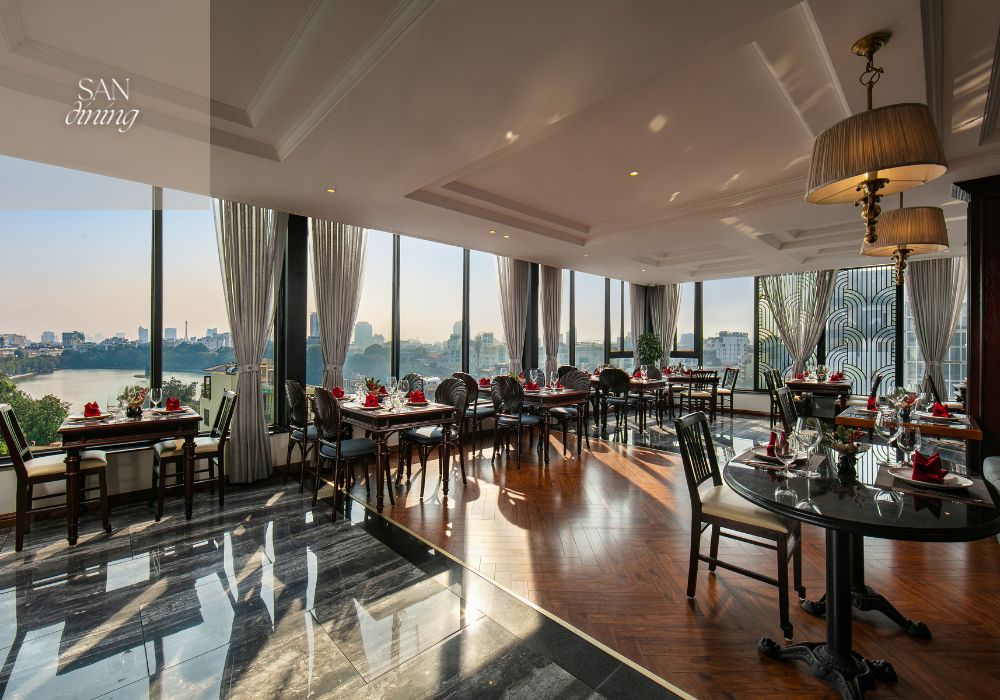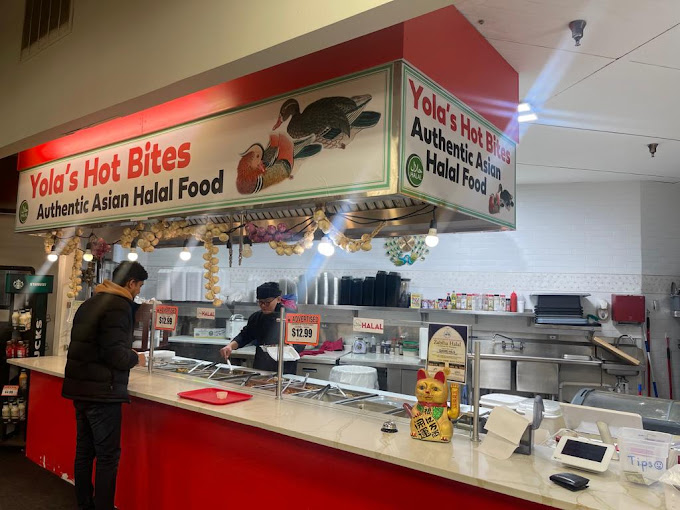Savor Authentic Eastern Cuisine With a Pan-Asian Spin for a Culinary Experience
Getting started on a cooking journey through genuine Asian food, enhanced with a Pan-Asian spin, supplies an unique possibility to check out the abundant tapestry of tastes that specify the area's varied cooking customs. This experience invites you to enjoy the splendid equilibrium of tastes-- sweet, salty, spicy, and sour-- balanced by aromatic herbs and seasonings. Imagine the innovative combination of Thai curry and ramen or the unanticipated delight of sushi burritos. As you ponder these attracting meals, take into consideration the social narratives and historic impacts that shape them, each bite providing a tale waiting to be discovered.

Checking Out Pan-Asian Flavors
In the realm of international gastronomy, Pan-Asian food stands apart for its remarkable variety and the unified interaction of tastes from numerous Asian cultures. This cooking method celebrates the distinct active ingredients and abundant customs located throughout the continent, creating a tapestry of tastes that is both appealing and enjoyable. Key to Pan-Asian cuisine is its capacity to balance different tastes-- pleasant, salty, spicy, and sour-- while highlighting the quality and quality of each active ingredient.
From the umami-rich soy sauce of Japan to the intense chili peppers of Thailand, Pan-Asian food supplies a comprehensive scheme of tastes. These components are typically incorporated in innovative ways, improving dishes with layers of intricacy. For example, the usage of aromatic natural herbs such as lemongrass and cilantro, typical in Vietnamese and Thai cuisine, includes a rejuvenating brightness to recipes, while the consolidation of coconut milk provides a luscious, rich texture.
The focus on fresh produce and aromatic spices guarantees that each meal is not only a feast for the taste however likewise for the detects. Pan-Asian cuisine welcomes diners to start a culinary trip, discovering the vast and differed landscapes of Asian gastronomy with every bite.
Fusion Meals to Attempt
While Pan-Asian food is commemorated for its standard flavors, the contemporary cooking landscape is significantly embracing blend recipes that mix these classic elements with impacts from various other areas. This ingenious strategy not only honors the abundant heritage of Asian culinary arts but additionally presents novel taste experiences that interest modern tastes buds.
A prime instance of such a blend recipe is the Korean-Mexican taco, where marinated bulgogi beef is covered in a warm tortilla, covered with kimchi and a hot gochujang-infused salsa. This mix marries the bold, tasty flavors of Korea with the vibrant, fresh aspects of Mexican cuisine. In a similar way, sushi burritos have actually acquired appeal, amalgamating the fragile creativity of Japanese sushi with the hearty, hand-held benefit of a burrito, frequently featuring combination ingredients like tempura shrimp and avocado with a drizzle of wasabi mayo.
An additional significant dish is Thai curry ramen, which instills the velvety, fragrant flavors of Thai curry right into the comforting brew of typical Japanese ramen, developing a harmonious blend that entices the senses. These combination recipes prolong past simple novelty; they represent a cooking discussion in between cultures, motivating expedition and development worldwide hawaiian chick fil a of Pan-Asian food.
Vital Ingredients and Spices
To genuinely appreciate Pan-Asian food, one must comprehend the vital active ingredients and flavors that create its structure. This diverse culinary style attracts from an abundant tapestry of Oriental practices, employing a harmonious mix of textures and flavors.
Aromatic aspects are critical, with lemongrass, garlic, and ginger being ubiquitous across various Pan-Asian recipes. These active ingredients supply a great smelling base that improves the complexity of flavors. Seasonings such as star anise, cardamom, and cinnamon introduce heat and character, resembling influences from regions like China and India.

Cooking Techniques and Tips
Mastering the art of Pan-Asian food requires knowledge with its distinctive cooking methods, each contributing to the dynamic tapestry of tastes this cooking custom is commemorated for. Central to these methods is the stir-fry, a quick food preparation strategy that preserves the dietary stability and vibrant colors of components. Making use of a wok, the stir-fry approach enables for even warm distribution, important for attaining the particular appearance and flavor equilibrium of Pan-Asian dishes.
Another essential strategy is steaming, especially prevalent in Chinese cuisine. This mild technique preserves the all-natural flavors and nutrients of active ingredients, making it excellent for seafood and veggies. Dumplings, a precious staple, frequently benefit from steaming, leading to soft, succulent structures.
Grilling, likewise important, passes on great smoky midsts to recipes such as Korean bulgogi or Japanese yakitori (pan asian dining Islamabad). This technique frequently entails seasoning components, enabling flavors to penetrate deeply before cooking over an open fire or warm plate
Last but not least, grasping the art of stabilizing flavors-- wonderful, sour, salty, bitter, and umami-- is critical. Properly layering these aspects can elevate a dish from ordinary to extraordinary, offering a facility and pleasing cooking experience that embodies the essence of Pan-Asian food.
Eating Experiences Worldwide
Around the world, Pan-Asian cuisine uses an unrivaled dining experience, celebrated for its abundant tapestry of flavors and vivid presentations. This culinary phenomenon has actually transcended social boundaries, capturing the hearts and palates of food lovers worldwide. In cosmopolitan cities fresh York, London, and Sydney, Pan-Asian dining establishments function as fusions where culinary practices from Thailand, Japan, home China, and beyond merge, offering restaurants with an eclectic mix of recipes that highlight the region's variety.
The international allure of Pan-Asian food exists in its ability to use both credibility and innovation. Chefs skillfully wed conventional active ingredients such as lemongrass, soy sauce, and miso with modern strategies, resulting in meals that are both acquainted and refreshingly brand-new. This fusion allows diners to get started on a culinary trip that respects heritage while embracing modernity.
Furthermore, eating experiences are boosted with thoughtfully developed settings that mirror the values of Pan-Asian looks. From minimal Japanese-inspired interiors to lively Thai-themed areas, each dining establishment offers a special atmosphere that enhances the cooking offerings. Therefore, customers are not merely eating a dish yet partaking in a cultural experience, making Pan-Asian dining a really worldwide sensation.
Verdict
The expedition of Pan-Asian cuisine offers a profound understanding of the detailed interaction of tastes and culinary practices across Asia. By accepting combination dishes such as Thai curry ramen and sushi burritos, the culinary trip not just highlights the versatility of standard active ingredients however additionally showcases innovative contemporary methods. This gastronomic experience, enhanced by cooking techniques and important spices, offers a special possibility to appreciate the multiculturalism and culinary artistry that define Pan-Asian cuisine on a worldwide scale.
Embarking on a culinary journey with authentic Asian food, enhanced with a Pan-Asian spin, uses an unique possibility to explore the abundant tapestry of tastes that define the area's diverse culinary customs.In the world of worldwide gastronomy, Pan-Asian food stands out for its amazing variety and the harmonious interplay of flavors from different Eastern cultures. Secret read this to Pan-Asian food is its capacity to balance contrasting tastes-- wonderful, salted, spicy, and sour-- while highlighting the quality and quality of each component.
